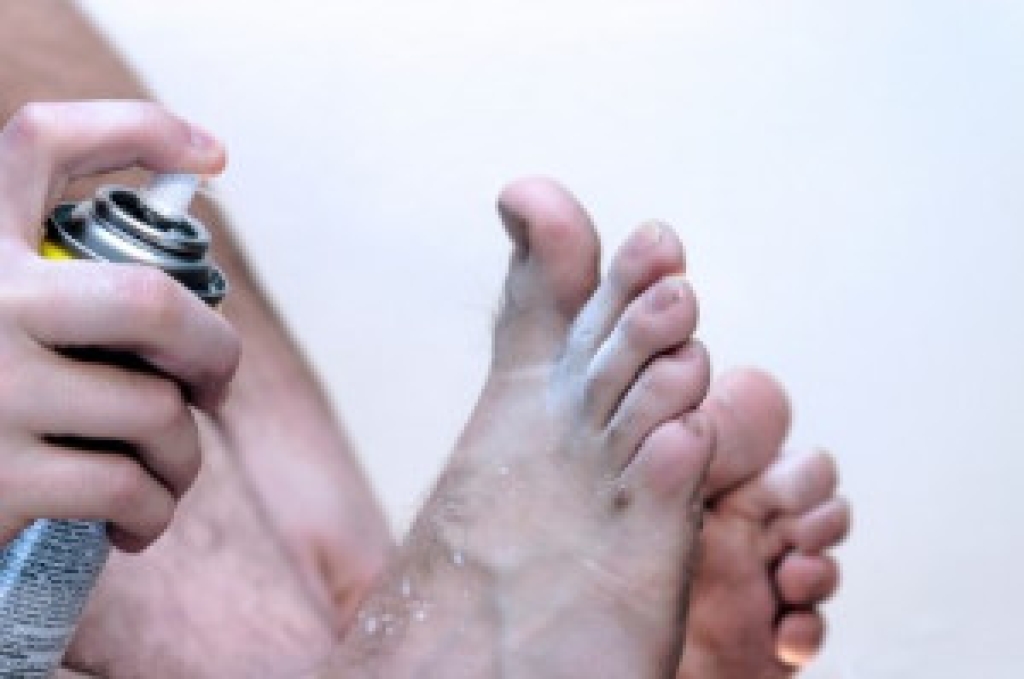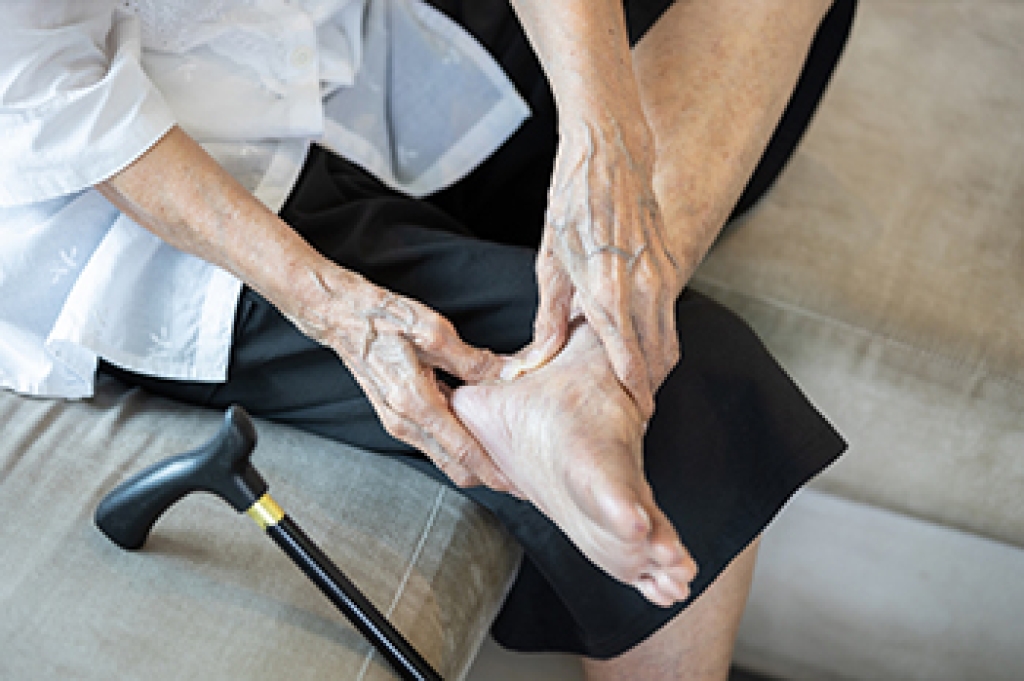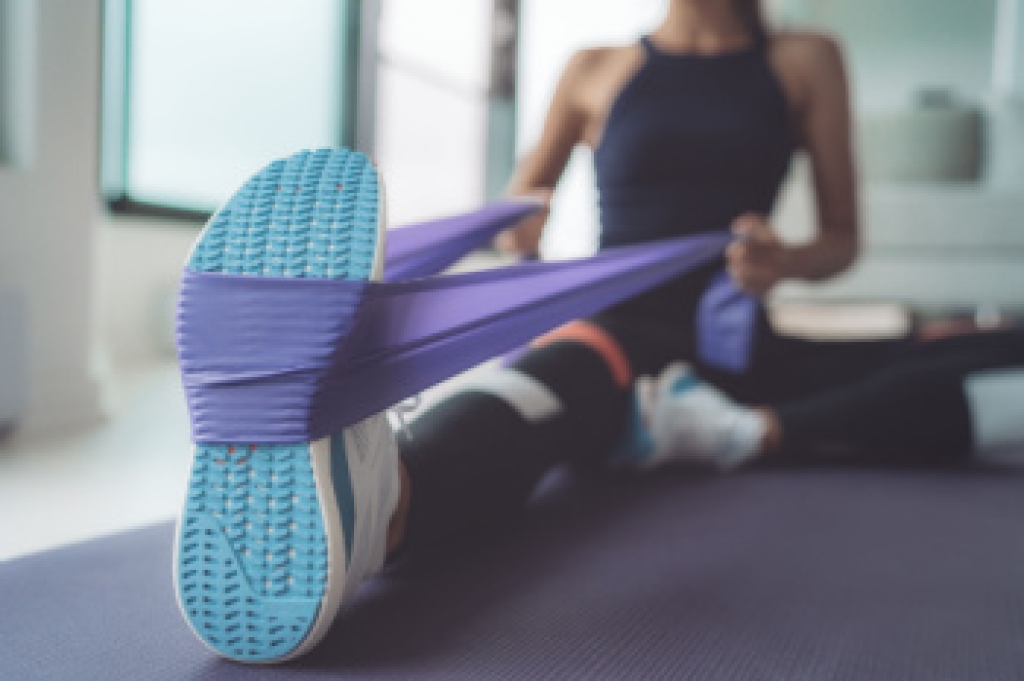Connect With Us
Blog
Blog
Managing Athlete’s Foot Effectively

Athlete’s foot is a common fungal infection that thrives in warm, moist environments such as shoes, locker rooms, and public showers. It often begins between the toes, causing itching, burning, redness, and peeling skin. Left untreated, it can spread to the soles or toenails, and may even pass to others through shared surfaces or footwear. Keeping the feet clean and dry is the first step in prevention and recovery. Changing socks regularly, wearing breathable shoes, and using antifungal powders or sprays can help stop the infection from spreading. Persistent or severe cases may require prescription-strength medication to fully clear the fungus and prevent recurrence. If you experience ongoing itching, cracking, or scaling on your feet that is persistent, it is suggested that you visit a podiatrist for a precise diagnosis and effective treatment plan.
Athlete’s Foot
Athlete’s foot is often an uncomfortable condition to experience. Thankfully, podiatrists specialize in treating athlete’s foot and offer the best treatment options. If you have any questions about athlete’s foot, consult with Katie Besselman, DPM from Advanced Podiatry. Our doctor will assess your condition and provide you with quality treatment.
What Is Athlete’s Foot?
Tinea pedis, more commonly known as athlete’s foot, is a non-serious and common fungal infection of the foot. Athlete’s foot is contagious and can be contracted by touching someone who has it or infected surfaces. The most common places contaminated by it are public showers, locker rooms, and swimming pools. Once contracted, it grows on feet that are left inside moist, dark, and warm shoes and socks.
Prevention
The most effective ways to prevent athlete’s foot include:
- Thoroughly washing and drying feet
- Avoid going barefoot in locker rooms and public showers
- Using shower shoes in public showers
- Wearing socks that allow the feet to breathe
- Changing socks and shoes frequently if you sweat a lot
Symptoms
Athlete’s foot initially occurs as a rash between the toes. However, if left undiagnosed, it can spread to the sides and bottom of the feet, toenails, and if touched by hand, the hands themselves. Symptoms include:
- Redness
- Burning
- Itching
- Scaly and peeling skin
Diagnosis and Treatment
Diagnosis is quick and easy. Skin samples will be taken and either viewed under a microscope or sent to a lab for testing. Sometimes, a podiatrist can diagnose it based on simply looking at it. Once confirmed, treatment options include oral and topical antifungal medications.
If you have any questions, please feel free to contact our office located in Saint Peters, MO . We offer the newest diagnostic and treatment technologies for all your foot care needs.
The Story Your Feet Tell With Time

As we age, our feet reflect a lifetime of movement and wear. The skin becomes thinner, joints stiffen, and circulation often slows, making older adults more vulnerable to discomfort and injury. Common issues include bunions, hammertoes, thickened nails, calluses, and balance problems caused by arthritis or neuropathy. These conditions can make walking painful and increase the risk of falls or infections. Fortunately, many of these challenges can be managed effectively through professional podiatric care. A podiatrist can trim thick nails safely, treat painful deformities, provide cushioning or orthotic support, and monitor for underlying vascular or nerve changes. Early evaluation and routine visits help maintain mobility and independence by keeping the feet healthy and comfortable. If you or an elderly loved one notice pain, swelling, or changes in foot shape, it is suggested that you schedule an appointment with a podiatrist for personalized care and appropriate treatment.
Proper foot care is something many older adults forget to consider. If you have any concerns about your feet and ankles, contact Katie Besselman, DPM from Advanced Podiatry. Our doctor can provide the care you need to keep you pain-free and on your feet.
The Elderly and Their Feet
As we age we start to notice many changes in our body, but the elder population may not notice them right away. Medical conditions may prevent the elderly to take notice of their foot health right away. Poor vision is a lead contributor to not taking action for the elderly.
Common Conditions
- Neuropathy – can reduce feeling in the feet and can hide many life-threatening medical conditions.
- Reduced flexibility – prevents the ability of proper toenail trimming, and foot cleaning. If left untreated, it may lead to further medical issues.
- Foot sores – amongst the older population can be serious before they are discovered. Some of the problematic conditions they may face are:
- Gouging toenails affecting nearby toe
- Shoes that don’t fit properly
- Pressure sores
- Loss of circulation in legs & feet
- Edema & swelling of feet and ankles
Susceptible Infections
Diabetes and poor circulation can cause general loss of sensitivity over the years, turning a simple cut into a serious issue.
If you have any questions, please feel free to contact our office located in Saint Peters, MO . We offer the newest diagnostic and treatment technologies for all your foot care needs.
Plantar Fibroma and Surgical Treatment Options

A plantar fibroma is a firm, noncancerous growth that forms within the plantar fascia, the thick band of tissue along the bottom of the foot. It can cause pain, discomfort, and difficulty walking, especially when pressure is applied. When conservative treatments fail, surgery may be recommended to remove the fibroma and relieve tension on the surrounding tissue. The procedure involves making an incision in the sole of the foot to carefully remove the fibrous mass while preserving healthy structures. A podiatrist can evaluate the condition, recommend appropriate treatment, and guide recovery after surgery. If you have a plantar fibroma, it is suggested that you consult a podiatrist who can discuss treatment options with you, which may include surgery for permanent removal.
Foot surgery is sometimes necessary to treat a foot ailment. To learn more, contact Katie Besselman, DPM of Advanced Podiatry. Our doctor will assist you with all of your foot and ankle needs.
When Is Surgery Necessary?
Foot and ankle surgery is generally reserved for cases in which less invasive, conservative procedures have failed to alleviate the problem. Some of the cases in which surgery may be necessary include:
- Removing foot deformities like bunions and bone spurs
- Severe arthritis that has caused bone issues
- Cosmetic reconstruction
What Types of Surgery Are There?
The type of surgery you receive will depend on the nature of the problem you have. Some of the possible surgeries include:
- Bunionectomy for painful bunions
- Surgical fusion for realignment of bones
- Neuropathy decompression surgery to treat nerve damage
Benefits of Surgery
Although surgery is usually a last resort, it can provide more complete pain relief compared to non-surgical methods and may allow you to finally resume full activity.
Surgical techniques have also become increasingly sophisticated. Techniques like endoscopic surgery allow for smaller incisions and faster recovery times.
If you have any questions, please feel free to contact our office located in Saint Peters, MO . We offer the newest diagnostic and treatment technologies for all your foot care needs.
Ankle Stretches to Improve Strength and Flexibility

Keeping your ankles flexible and strong can prevent injuries and ease discomfort. Common stretches include ankle circles, which involve rotating the ankle slowly in both directions to increase mobility. The Achilles stretch is performed by leaning forward against a wall with one leg extended behind to stretch the tendon. Additionally, the towel stretch is done by sitting with your leg straight, looping a towel around your foot, and gently pulling toward you to lengthen the calf. The band stretch uses a resistance band to improve ankle strength and flexibility. A podiatrist can recommend the right stretches for your ankle condition, and guide you through safe techniques. If you have ankle pain, it is suggested that you schedule an appointment with a podiatrist who can offer effective relief solutions.
Stretching the feet is a great way to prevent injuries. If you have any concerns with your feet consult with Katie Besselman, DPM from Advanced Podiatry. Our doctor will assess your condition and provide you with quality foot and ankle treatment.
Stretching the Feet
Being the backbone of the body, the feet carry your entire weight and can easily become overexerted, causing cramps and pain. As with any body part, stretching your feet can serve many benefits. From increasing flexibility to even providing some pain relief, be sure to give your feet a stretch from time to time. This is especially important for athletes or anyone performing aerobic exercises, but anyone experiencing foot pain or is on their feet constantly should also engage in this practice.
Great ways to stretch your feet:
- Crossing one leg over the others and carefully pull your toes back. Do 10-20 repetitions and repeat the process for each foot
- Face a wall with your arms out and hands flat against the wall. Step back with one foot and keep it flat on the floor while moving the other leg forward. Lean towards the wall until you feel a stretch. Hold for 30 seconds and perform 10 repetitions for each foot
- Be sure not to overextend or push your limbs too hard or you could risk pulling or straining your muscle
Individuals who tend to their feet by regular stretching every day should be able to minimize foot pain and prevent new problems from arising.
If you have any questions please contact our office located in Saint Peters, MO . We offer the newest diagnostic and treatment technologies for all your foot and ankle needs.
Blog Archives
- 2025
- 2024
- 2023




